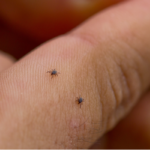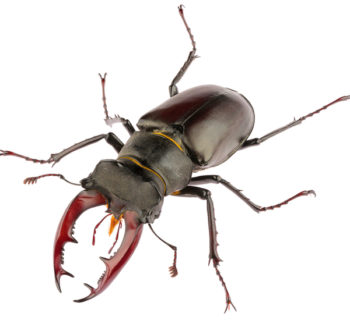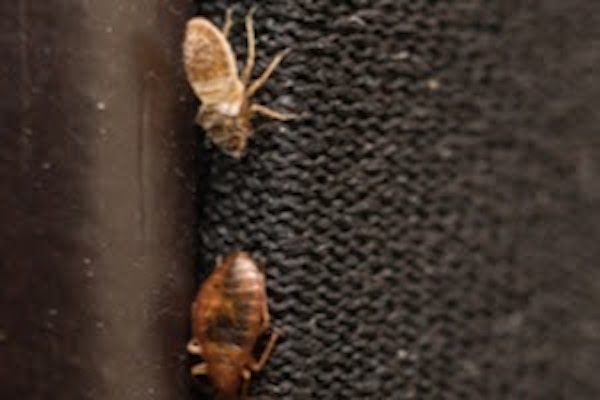
Bed bugs are associated with beds because they survive by hiding in dark, covered hiding spots near food sources. They frequently nestle themselves in among mattress seams, ridges, folds, zippers, and other crevices. They also frequently hide on bed frames, furniture such as headboards or nightstands, and even electrical outlets.
Bed bugs are very good at staying hidden, but they’re also rather predictable. They don’t like to travel very far from their food sources, so they depend on hiding places near those food sources. If you have an infestation, then they’re probably hiding either in your bed or at least in your bedroom. Here’s where to find bed bugs in each of their most likely hideaways:
In the mattress
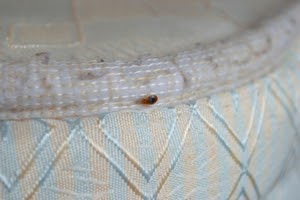
Bed bug’s flat bodies help them squeeze into any opening about the width of a credit card. Unfortunately, this means bed bugs could potentially live on your bed without your knowing… at least, until they bite you. Here’s how to find even the most cleverly-hidden bed bug on your bed:
- Seams: Pull back seams and use a flashlight to look for signs.
- Zipper: Check both the bed’s zippers and any covers or sheets that may have zippers.
- Creases and folds: Even small, miscellaneous creases such as the sewn-in folds of the mattress could harbor bed bugs.
- Pillows and pillowcases: Check the zippers, seams, and cases thoroughly and wash them frequently.
- Underside: Remember to flip the mattress and check both sides.
- Box spring: Bed bugs can live anywhere inside your mattresses’ box spring, especially if there are any holes or tears in its underside.
- Fitted sheets: Strip the sheets and check both sides, including the corners and creases.
Near the mattress
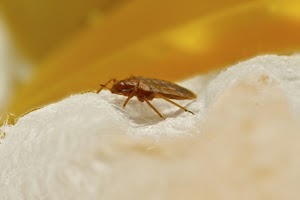
Despite their affinity for living as close to food as possible, bed bugs needn’t hide in your bed. In fact, they’ll hide in dark, cramped crevices near your bed just as frequently. They simply wait to crawl up to you until you’re sleeping. Here are their most likely nearby hideouts:
- Headboard: Take your headboard off the wall and check behind and under it. Make sure you check inside its cover, too.
- Nightstands: Check any cracks, crevices, or small surfaces the bugs could cling to on any furniture, including your nightstand.
- Bed frame: After checking both sides of the mattress, pull it away to check the inside and outside of the frame itself.
- Dust ruffle: Wash your dust ruffle from time to time and check both sides for bugs.
- Electrical outlets: Yes, bed bugs can squeeze behind outlet panels. Take them off to check for signs.
- Wallpaper: Bed bugs love to sneak under peeling wallpaper. If your wallpaper is damaged, check and replace it ASAP.
- Stuffed animals: We realize this is bad news. If the stitching or seams of a stuffed animal are loose at all, bed bugs could use it as a particularly insidious hiding place.
In the bedroom
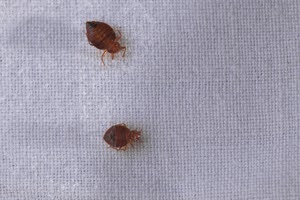
Though most bed bugs are found close to your bed, they could live anywhere as long as they have a consistent food source nearby. Though bed bugs rarely venture throughout a home, pretty much anywhere in your bedroom is fair game. Including each of these hiding places:
- Stuffed furniture: Any furniture bed bugs can crawl inside of, they will. Check seams, zippers, cushions, and any other openings. Don’t forget the undersides, either.
- Bookcases: Bed bugs can hide between, under, or sometimes even in books themselves, as well as on shelves.
- Wall hangings: Bed bugs may squeeze behind or even within hanging frames and other wall art.
- Stuffed animals: We realize this is bad news. If the stitching or seams of a stuffed animal are loose at all, bed bugs could use it as a particularly insidious hiding place.
- Loose clothing: Bed bugs occasionally hide in clothing, especially if you leave it in your closet for long periods of time.
- Closet: Speaking of your closet, check anything you keep uncovered inside of it, especially any boxes or bags you keep on the floor.
- Wardrobes, cabinets, or chests: Bed bugs may squeeze through drawers or into the underside of virtually any furniture around your bedroom.
- Carpeting or hardwood: If all else fails, bed bugs may even squeeze into cracks in your wood paneling or hide under any damaged carpeting.
In Your luggage
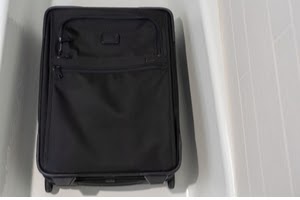
Bed bugs spread by traveling with you. To prevent them, pay special attention to anything you transport into and out of your home. That counts double for anything you bring to multiple locations where you spend time or (especially) sleep. These are the most common materials bed bugs turn into their own personal Trojan Horses:
- Luggage: This is a big one. Bed bugs love to hide in luggage boxes and bags and accompany you home. Thoroughly check and run bags in a dryer upon returning home.
- Clothing: Especially loose laundry. Run all clothes (including the ones you’re wearing) through the washer and dryer as soon as you get home from traveling.
- Shoes: Including the ones you’re wearing! Run shoes through the dryer, too.
- Cardboard boxes: Cardboard is full of nooks and crannies bed bugs can squeeze into and out of. Be very careful about the boxes you bring into your home from outside.
- Thrift store goods: Especially furniture, antiques, and clothing.
- Electronics: Including televisions, appliances, and computers.
- Grocery bags: Usually on the bags themselves, though they could be inside containers such as cereal boxes.
If you suspect you might have bed bugs, check as many of the locations we listed as possible. If you find signs of bed bugs anywhere, you can probably assume the worst. Remember: you never have “just” one bed bug.
Whether you find signs or the bugs themselves, however, the next step is obvious: call the pros. Bed bugs are hard to wipe out on your own, but we can do it quickly, reliably, and completely. Just give Griffin a call as soon as you discover your bed bug problem. We’ll provide your solution–no ifs, ants, or bugs!


